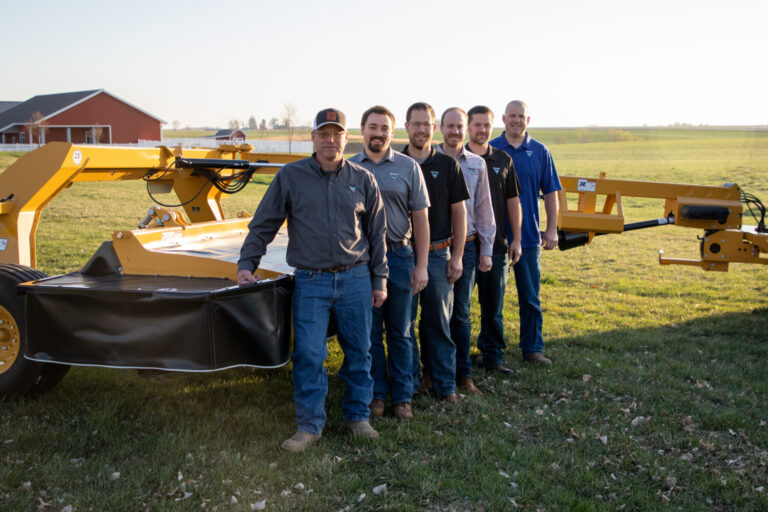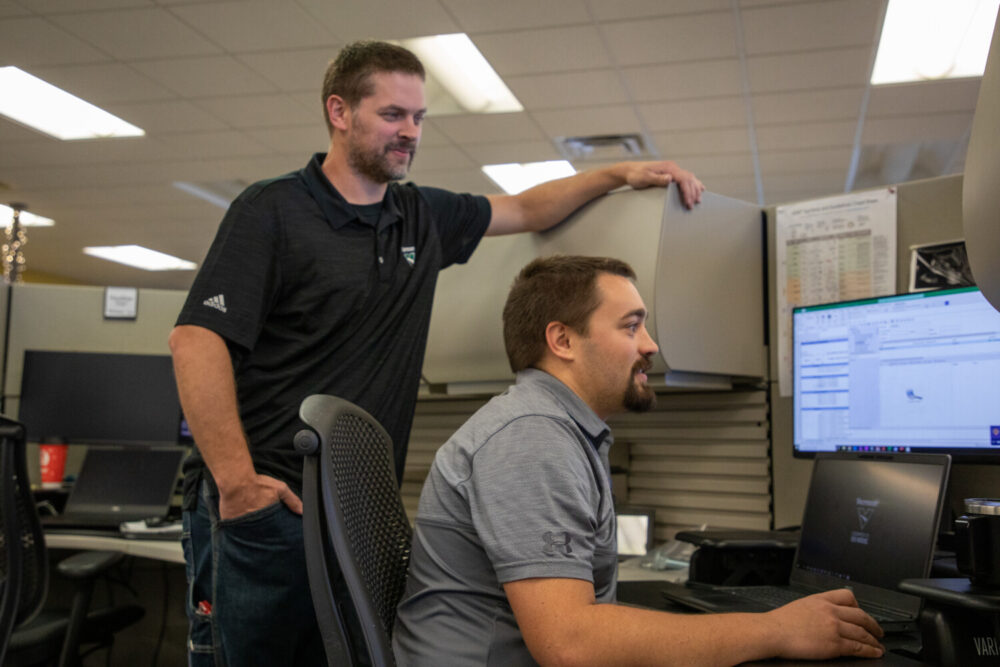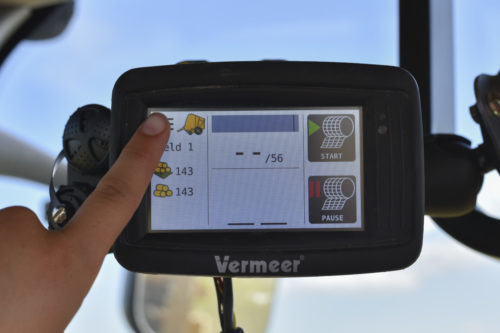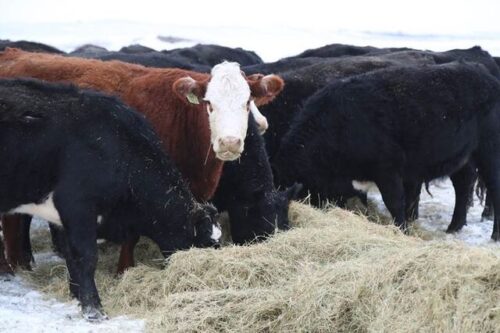
People behind the product: mid-sized trailed mowers
May 2023
To get a better picture of the journey it took to take the mid-sized trailed mowers from a design to a machine in the field, we sat down with some of the engineers who diligently worked on these models. All three engineers — Eric Bergum, Phil Stam and Tate Ketelhut — have differing backgrounds and career experiences, but all share a passion for the agriculture industry instilled in them at a young age which helped them when working on a product to support hay and forage growers around the country.
How it started
The creation of the Vermeer TM105, TM120 and TM135 trailed mowers started with the intention to provide farmers and ranchers with more size options in the trailed mower lineup.
Before the project started Vermeer was familiar with how to make a quality hay and forage mower. They had already established an extensive lineup with a variety of sizes, with the smallest cutting width being 8.1 ft (2.5 m) and the largest being 20.8 ft (6.3 m). While having a wide range of cutting widths made for models suited to a variety of operation sizes, it became apparent that these offerings did not meet the needs of every customer. The team was motivated to solve this problem and strived to provide a wider variety of models for dealers to offer to farmers and ranchers. The first stage in the project was to define what models would be offered and their respective specifications. Because Vermeer already had a well-established trailed mower lineup, the team wanted to use common components seen in other models. This allowed them to cherry-pick some of the features they felt would work the best for hay and forage growers looking for this size, while keeping some of the commonalities through the lineup.

Challenges along the way
With any project, things don’t always go as planned. A challenge that the whole team experienced during the mid-sized trailed mower project: balancing the suspension.
When the work started on the suspension they figured out that it would take a few tries to get it to perform. As they attempted different iterations, they continued to make adjustments to create equal pressure to the ground and a balanced header. Bergum said: “We want to make sure that when these mowers experience build up from long days in the field, it doesn’t affect how the mowers lift and lower, or how it floats across a field.” With that in mind, the team made sure to take their time to create a high-performing mower that also moved with ease.
Another design element of the mid-sized trailed mower that took some extra considerations were the hoods. The cutter bar aligns with the large trailed mower models, but the hood design and curtain placement differ slightly for the mid-sized trailed mowers. This was done to manage how the crop is being delivered to the cutter bar before being cut — yet another way these mowers provide a high cut quality. Taking the extra time to work through different designs to get the desired result was well worth it to create a smooth cutting experience.
Making something to be proud of
When Ketelhut looks back on his work for the mid-sized trailed mower project, he is especially proud of the maneuverability of the mower and how that can benefit customers each time they go into a field. “For operators who might be working around obstacles, this mower allows them to mow in all positions,” Ketelhut said. “This makes it efficient to move around, navigate around trees and get every bit of hay mowed.”
Being able to bring convenience — along with simplified processes — to operators is always a good feeling. That is especially true for Bergum when he looks back on the design of the hood and how they created a convenient, yet functional feature. “We wanted to make accessing the cutter bars a quick process, and I think we succeeded in that,” Bergum explained. “It’s convenient to get in there, perform maintenance on the cutter bar, and be back out in the field quickly.”
For Stam, he feels the visibility to the mower ideal due to the design of the tongue layout. He said, “The mower sits behind the tractor in just the right spot and allows you to turn comfortably. You can see where it is, when you need it.”

The whole team agreed they could hang their hat on one thing in particular: the cut quality. For any mower, the goal is to provide a clean cut, and lay the hay down smoothly. For the mid-sized trailed mowers, keeping that high-quality cut found throughout the entire Vermeer mower lineup was a top priority for the entire team.
The goal for this Forage engineering team was simple: Create a mid-sized trailed mower for the full-time farmer or rancher who needs a reliable, heavy-duty mower that they can trust will perform. The engineering team did this by taking their time to adjust designs when necessary and keeping cut quality and convenient maintenance a top priority — all while keeping the same premium features seen throughout the trailed mower lineup.
For more information on Vermeer trailed mowers, be sure to contact your local dealer.






